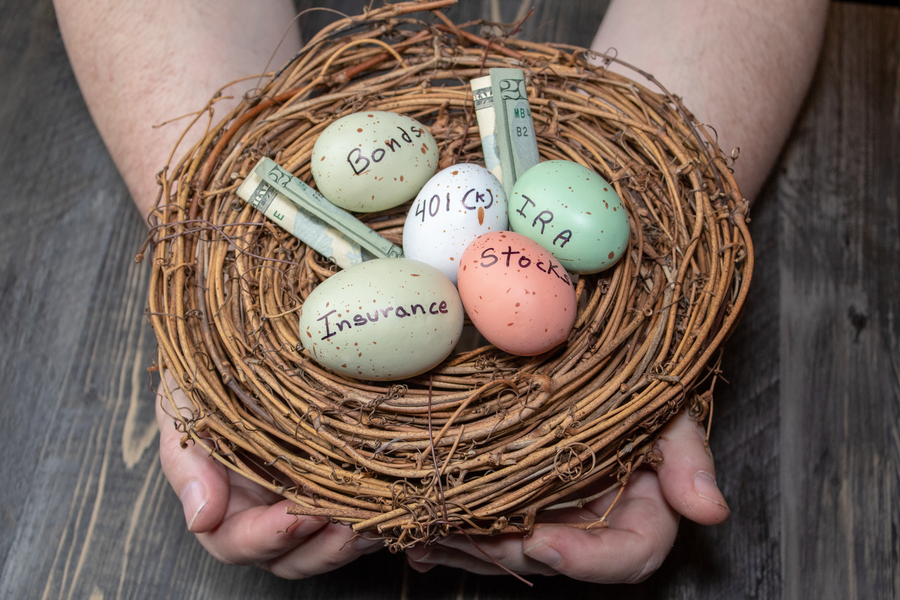I WANT
RELATED LINKS
I WANT
RELATED LINKS
RELATES LINKS
I WANT
RELATES LINKS
Services
Related Links

คำค้นหาที่แนะนำ
ผลการค้นหา "{{keyword}}" ไม่ปรากฎแต่อย่างใด
ข้อแนะนำในการค้นหา
- ตรวจสอบความถูกต้องของข้อความ
- ตรวจสอบภาษาที่ใช้ในการพิมพ์
- เปลี่ยนคำใหม่ กรณีไม่พบผลการค้นหา
Use and Management of Cookies
We use cookies and other similar technologies on our website to enhance your browsing experience. For more information, please visit our Cookies Notice.
- Personal Banking
- Stories & Tips
- Retirement Plan
- If stocks fall, how to manage retirement money?
- Personal Banking
- ...
- If stocks fall, how to manage retirement money?
If stocks fall, how to manage retirement money?
06-07-2020
In retirement planning, We will divide the planning into 2 parts. There are Pre-Retirement Planning and Post-Retirement Planning. For those who have not retired Planning is often a savings and investment plan to ensure you have enough money for retirement.
For those who have retired, there may be a question of whether retirees need financial planning as well? The answer is very necessary. The one who already retire the more you must plan. Because of your retirement is the last sum of money in your life. If not plan well, there may be a chance that this money will run out before we end our life expectancy. Therefore, we must plan this money very well
And if the stock falls heavily How do we manage our retirement money? This article has answers.

To manage money when stocks fall, or market volatility is divided into 2 cases as follows
1. For those who have not retired
it is an opportunity for us to review our retirement investment plans. By reviewing the proportion of investment in the stock that it has decreased from the desired target proportion or not. For example, if our retirement portfolios Invest in a portfolio that accepts a moderate risk. With investments in stocks of 50% and invest in 50% of debt instruments. If there is an investment of 1 million baht with such investment proportion. We will have 500,000 baht in equity investments and 500,000 baht in debt. Overtime Let's say our stock has dropped 20%, but debt instruments have increased by 1%. Our investments in our portfolio are as follows:
Value of shares 500,000 x 0.8 (shares fall by 20%, the value is reduced to 80%) = 400,000 baht
Value of bond 500,000 x 1.01 (additional debt instrument 1%) = 505,000 baht
Total value of the port = 905,000 baht
With the remaining investment value Will have a proportion of shares 400,000 / 905,000 = 0.44 or 44%
And the proportion of debt instruments 505,000 / 905,000 = 0.56 or 56%
You can see that our investment ratio has changed from 50:50 to 44:56, and what we should do is Adjusting our investment ratio back to the 50:50 level. In accordance with the level of risk that we can accept or as we call it rebalancing
Rebalancing
Rebalancing is to rebalance the investment portfolio It is to adjust the proportion of the core that we plan to invest in the long term (Strategic Asset Allocation (SAA) to return to the proportion we originally intended to invest in). By selling assets that are over a certain proportion and buy the assets that are below our designated weight.
From the example above We will sell the bond. And buy more shares to bring the investment ratio back to the 50:50 level as before. And much will sell the bond and how much share to buy.
If wanting to return to invest in the proportion of 50:50 of the current investment value of 905,000 baht. Must have 452,500 baht in equity investments (50% x 905,000) and 452,500 baht in bonds as well.

But from the current port, There are only 400,000 baht in shares but 505,000 baht in debt. Therefore, we will sell 52,500 baht (505,000 - 452,500) of the bond and buy 52,500 baht from the sale of the debt securities. To rebalance the port back to 50:50 as before. Will see that when stocks fall It is an opportunity that allows us to adjust our portfolios. And use the proceeds from the sale of debt securities to buy additional shares at a lower price
2. For those who have retired
there should be a not very high proportion of investments in stocks. Because the retirement money is the last sum that cannot be taken risk very seriously. The proportion of investing in stocks should not exceed 15 - 20%. Which if there is a small proportion of shares There is no need to worry if stocks fall. We may rebalance our portfolios as in the example above. Or if it is not easy to adjust the port It is advisable to divide the retirement money into several parts according to the period of use. For example, if you want to retire at 60 and expect the expiration of life at 85. That means we still have another 25 years to invest after retirement. Therefore, our stock investment could be money that is saved for the last 5 to 10 years before the end of life. (Which will still have an investment period for another 15 - 20 years)
If stocks fall, we do not have to worry too much. Because the stock fell Can go back up (If it is an investment in stocks with good fundamentals to support) Stock fluctuation will follow the economic cycle. If we have a long enough investment period, for example, 10 years or more, we will be able to move through the economic downturn to the economic recovery period. Allocations for use after retirement may be made by estimating your retirement expenses per year. We should prepare the funds for the first 5 years in safe assets such as deposit accounts or money market funds. As for the money that will be used in a period of 5-10 years after retirement, it may be allocated to debt instruments. As for the money that will be used in a period of 5-10 years after retirement, it may be allocated to debt instruments. As for the money that will be used during 10 years after retirement onwards Can invest in risky assets at a level consistent with our risk tolerance.
In summary, investment planning for retirement. It is something that we must always do. Because as factors change, our ability to take risks also changes. Especially in these volatile economic conditions, regularly reviewing investment portfolios. Along with a constant balance of investment, portfolios will help to pay heavily and allows us to overcome this situation.
Nipapun Poonsateansup CFP®, ACC
Independent financial planners, writers and speakers